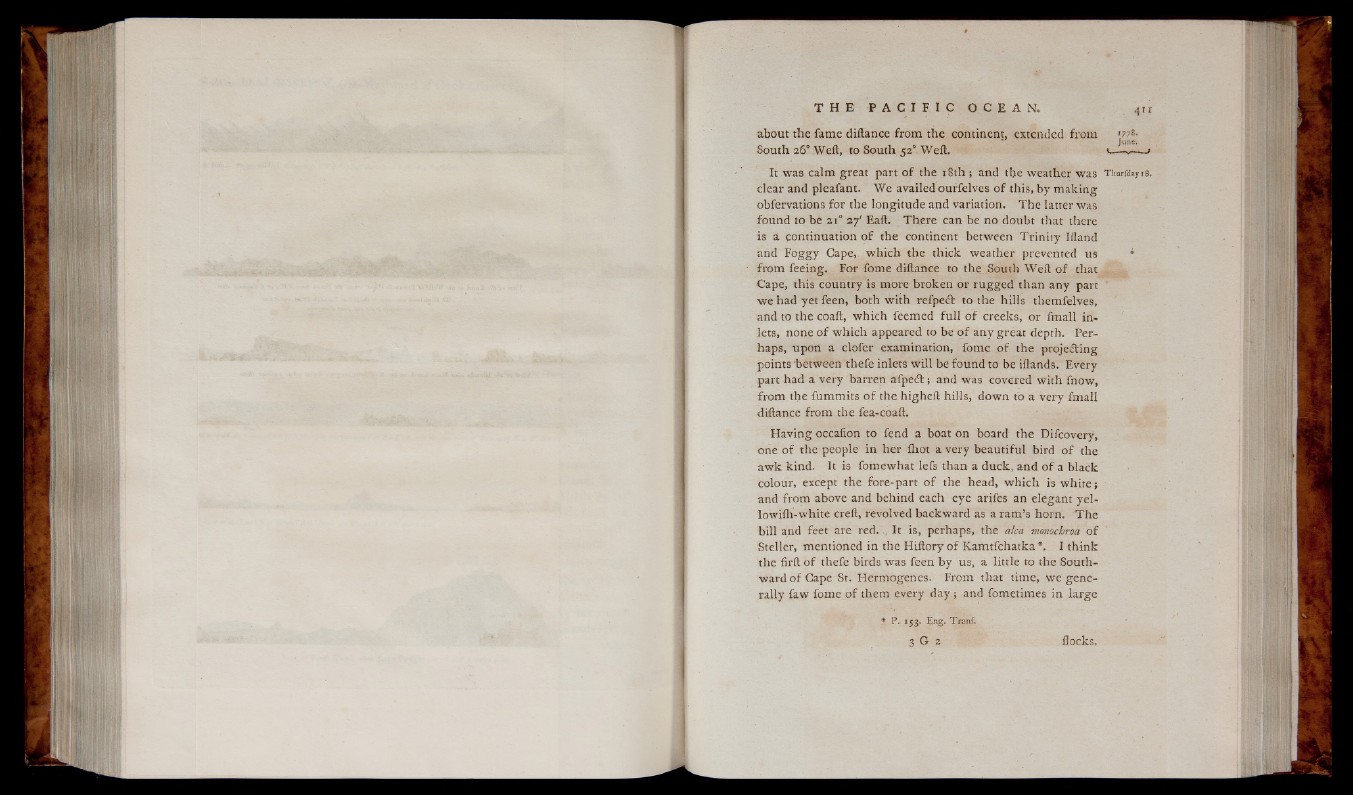
about the fame diftance from the continent, extended from «778-
South 26° Weft, to South 52° Weft. «—i-v— .j
It was calm great part o f the 18th ; and the weather was Thurfdayis.
clear and pleafant. We availed ourfelves o f this, by making
obfervations for the longitude and variation. The latter was
found to be 21° 27' Eaft. The re can be no doubt that there
is a continuation o f the continent between T r in ity Ifland
and Fo gg y Cape, which the thick weather prevented us i
from feeing. For fome diftance to the South Weft o f that
Cape, this country is more broken or ru gg ed than any part
we had yet feen, both with refpe£t to the hills themfelves,
and to the coaft, which feemed fu ll o f creeks, or fmall inlets,
none o f which appeared to be o f any g reat depth. Perhaps,
upon a clofer examination, fome o f the projecting
points ’between thefe inlets w ill be found to be iflands. Every
part had a very barren a fp e i t ; and was covered with fnow,
from the fummits o f the higheft hills, down to a ve ry fmall
diftance from the fea-coaft.
Having occafion to fend a boat on board the Difcovery,
one o f the people in her ihot a very beautiful bird o f the
aw k kind. It is fomewhat lefs than a duck, and o f a black
colour, except the fore-part o f the head, which is w h ite ;
and from above and behind each eye arifes an elegant yel-
lowifti- white creft, revolved backward as a ram’s horn. T he
bill and feet are red. It is, perhaps, the alca monochroa o f
Steller, mentioned in the Hiftory o f Kamtfchatka *. I think
the firft o f thefe birds was feen by us, a little to the Southward
o f Cape St. Hermogenes. From that time, we generally
faw fome o f them every day ; and fometimes in large
* P. 153. Eng. Tranf.